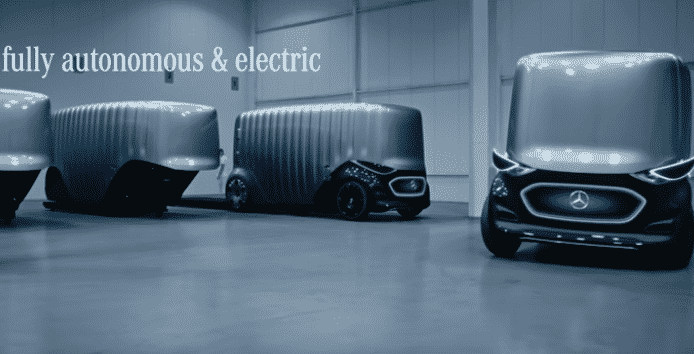It’s becoming increasingly clear that the future of transportation, and perhaps most global infrastructure, will be predominately comprised of autonomous machines. The extent to which this type of technology will be in control or the optics of how it will be incorporated is still up for much debate but may have become a bit clearer thanks to Mercedes-Benz most recent development. The car company presented their latest and greatest technology in the form of its Vision URBANETIC, an autonomous, electric vehicle capable of being modified for both passenger and goods transportation.

Aside from brilliant communication technology, the Vision URBANETIC has an ambitious goal of integrating an IT infrastructure that can help alleviate the strain of traffic in many cities. The system is designed to analyze and learn from local information and requirements, allowing for it to begin to predict future demand, therefore creating a fleet of flexible and efficient autonomous vehicles. Rather than sticking to pre-planned routes, the Vision URBANETIC would assess areas, determine locations in high-demand and redirect accordingly. This would help improve passenger wait times and could be a solution to the growing problem of traffic in cities like Los Angeles and New York City.
While Mercedes-Benz is hardly the first company to release such a product, their innovation may reveal a glimpse at what the future of human and machine interaction may look like. Much of such uncertainty stems from the question of how much autonomy should be given to “intelligent” technologies. Concerns surrounding this issue have risen not only from those fond of holding onto the tradition but progressive technology geniuses like Elon Musk. Musk and others have publicly stated the importance of giving deep thought to the notion of giving up all control to machines that could prove unpredictable. The Vision URBANETIC was designed intentionally with just such human-machine interaction matters in mind. The electric vehicle places importance on a concept termed, “informed trust.” At its core, this concept is focused on creating machines that inform the surrounding environment, meaning human beings, of its intentions. It does so by utilizing a variety of built-in cameras and sensor units in conjunction with large display units on the exterior of the vehicle. Pedestrians and cyclists receive signals on the display units that they have been recognized and of equal importance, are informed of the vehicles upcoming actions. This groundbreaking innovation addresses the lack of clarity currently associated with current autonomous vehicle models. By providing real-time communication features, Mercedes-Benz Vision URBANETIC can set the foundational expectations and standards for prioritizing human-machine interaction in electric vehicle development.
Perhaps the most unique aspect of Mercedes-Benz latest electric vehicle is that they plan to achieve a fundamental change in transportation while working almost entirely within the current road infrastructure. The technology in their vehicles is designed to handle the shortcomings of the existing system, rather than trying to reinvent and circumvent it as others have proposed, a mission unlikely to ever gain traction due to the unbearable financial burden it would create. The aforementioned camera and sensors systems would play a large role in dealing with the complexities of cities, but the benefits do not stop there. The electric vehicle would drastically reduce emission and noise pollutants. While this addresses the obvious environmental concerns currently plaguing the automobile industry, an unforeseen opportunity could arise from the virtually noiseless vehicle. Goods delivery and transportation presents an issue at the moment as large trucks create too much noise to operate effectively late at night in highly populated cities. Should this technology be deployed, transportation of material goods would be available around the clock, creating a new stream of economic potential. It remains to be seen which, if any, of these possible benefits, will come to fruition, but it’s safe to assume that the Vision URBANETIC has created plenty of things to be excited about.
















Leave a comment